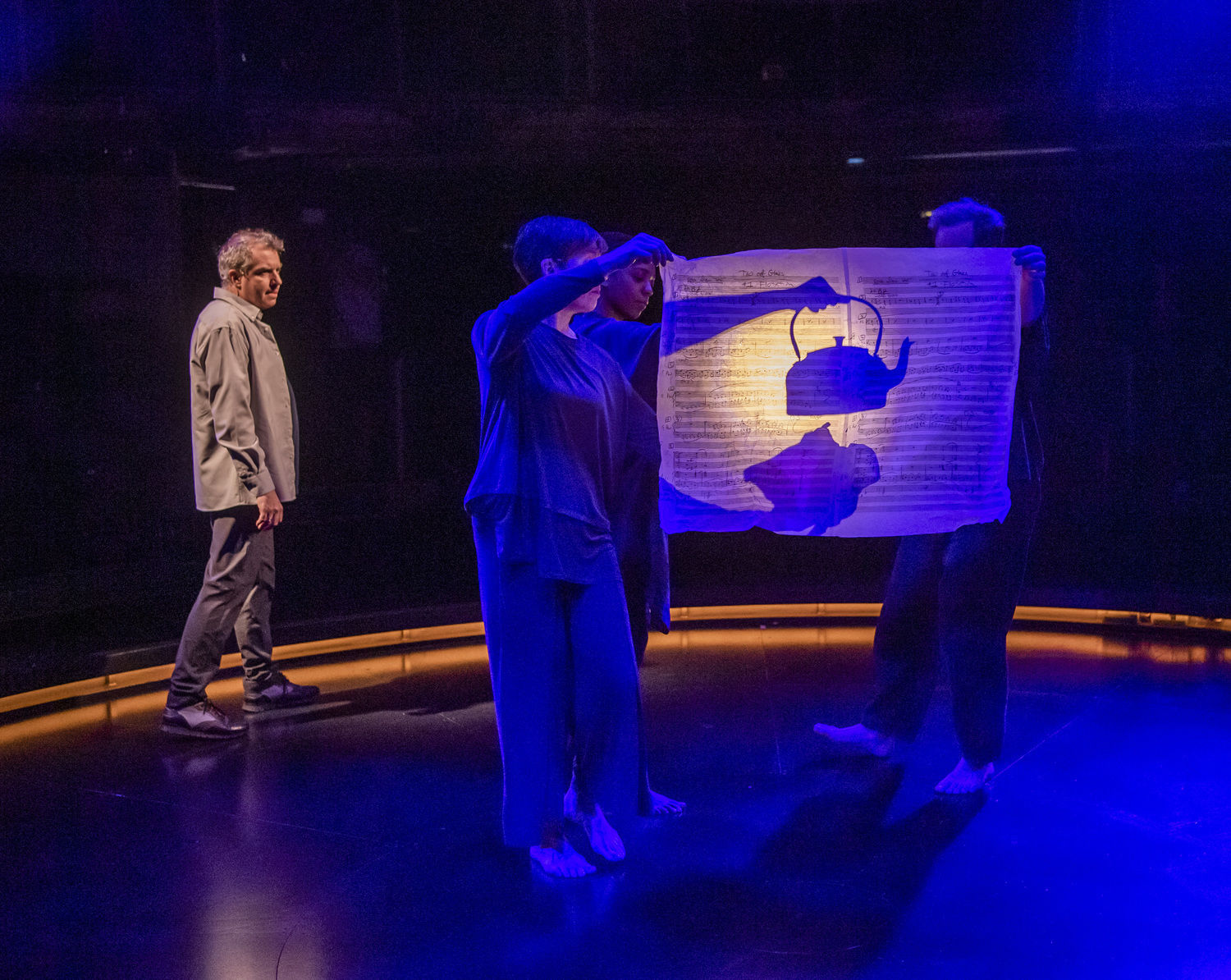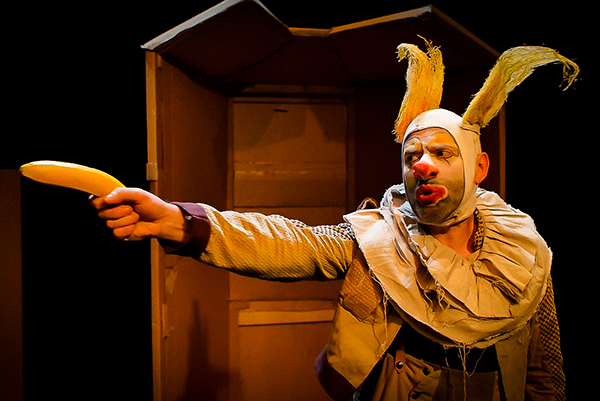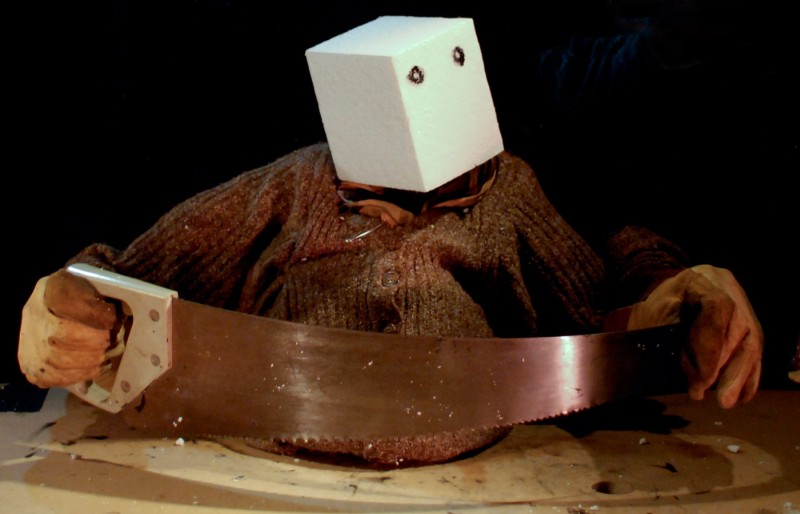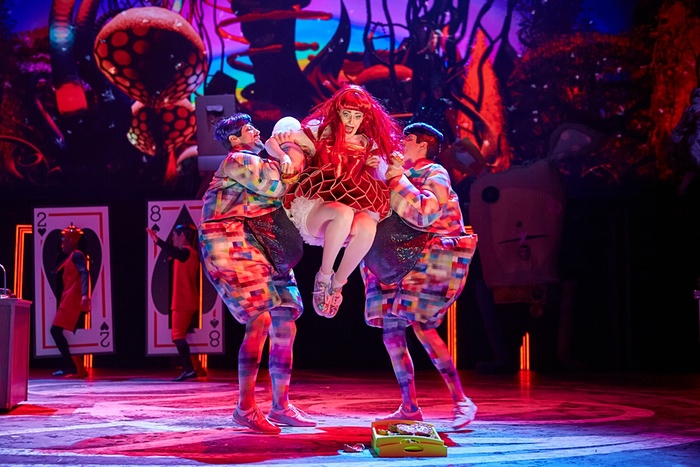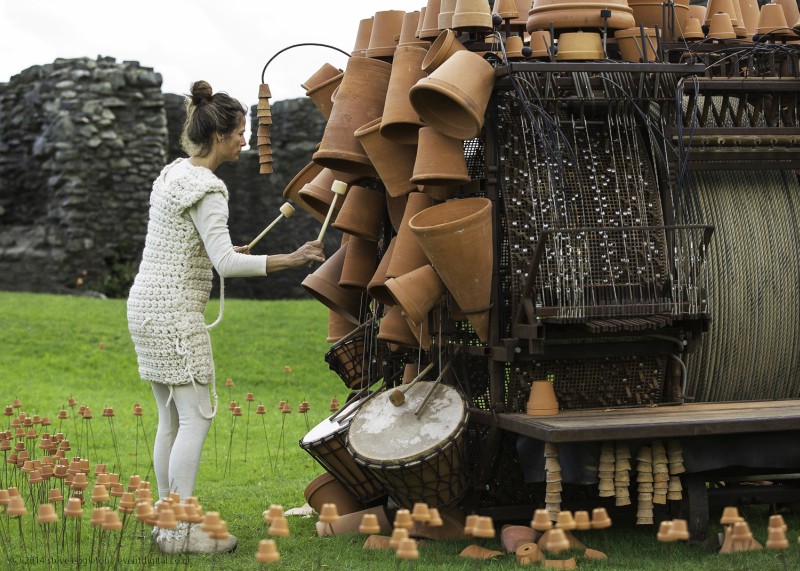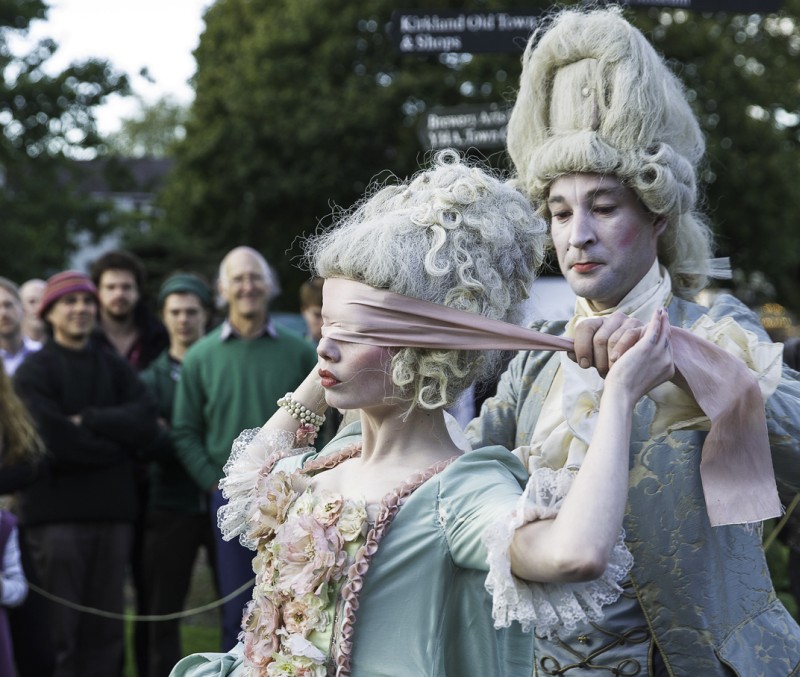We take our seats in Manchester’s Royal Exchange Theatre and the lights go down, only for a spotlight to pick out one of the audience seated in the front row. It’s Improbable’s Phelim McDermott (writer/director), and he starts the show in a very informal manner, chatting to his neighbour in the next seat and telling us about his long history with the Royal Exchange. This gets mixed in with his more recent history, where he’s talking to Phillip Glass and Maurice Sendak about a possible show. It never happened, and this theme of things almost happening gets added into the mix.
The show features Glass’s music (played by a live orchestra), puppets (designed and made by Lyndie Wright of Little Angel Theatre, and manipulated by three puppeteers, including Sarah Wright), and other animated objects made of throwaway materials – and it makes great use of the theatre in the round. There’s a circular revolving stage and three large, illuminated steel circles which fit inside each other, and which descend from the roof to illustrate McDermott’s ideas about the pyramid structure of the creative unconscious.
There’s rather too much illustration of ideas in the first half – too much telling and not enough showing. McDermott is a very engaging performer and uses repetition and re-incorporation of narrative themes as a neat way of echoing Glass’s compositional approaches to music, but the images constantly get explained to the point where I wished he’d stop talking.
There was a big shadow hovering over this show. McDermott used to work with Julian Crouch, and the show uses approaches (sellotape, puppets made on the spot) that the two used together in Improbable Theatre twenty years ago, in brilliant shows like 70 Hill Lane and Sticky – but here with far less purpose or invention. The scenes where pieces of paper became walking figures seemed like basic puppetry exercises rather than images that could take flight.
To be fair, the show was entertaining and thoughtfully staged throughout. The narrative eventually led to a story where Glass finally arrives at a workshop they had organised and tells McDermott to stop talking and do something instead. Here the music takes over, McDermott lies on the floor as if asleep or in a coma (this was mentioned in one of the stories), a grand piano with a player piano facility played a tune Glass had picked out in these rehearsals, the steel circles made evocative patterns on the circular floor, the revolving floor revolved, and our imaginations could take over.
Phillip Glass himself wandered in as if by chance and sat down to play – a lovely moment. These two scenes said far more about imagination and creativity than a shaggy dog story with TED talk style interventions ever could.
Featured image: The Tao of Glass. Photo by Tristram Kenton

